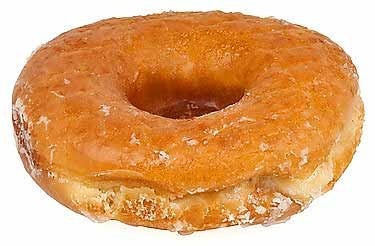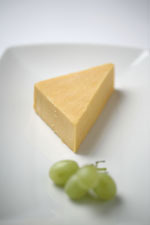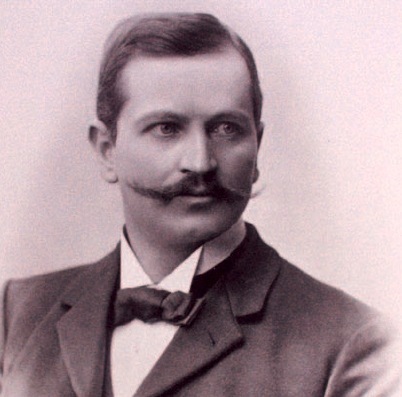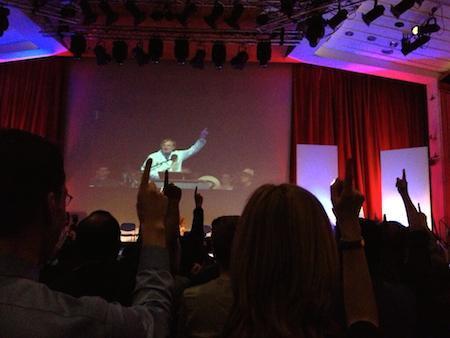Marc Abrahams's Blog, page 417
March 18, 2014
Physics exercise: Drude’s mustache
Today’s Physics Exercise of the Day: Calculate the forces acting upon the mustache of Paul Karl Ludwig Drude. Drude was editor of the journal Annelin der Physik from 1900 to 1906.

Croissant’s agnotology of ignorance and absence
Behold what Croissant hath wrought about things that aren’t there:
“Agnotology: Ignorance and Absence or Towards a Sociology of Things That Aren’t There,” Jennifer L. Croissant,” Social Epistemology, vol. 28, no. 1, 2014, pages 4-25. (Thanks to investigator @Bucksi for bringing this to our attention.) the author, at the University of Arizona, explains:
“The study of ignorance, or agnotology, has many similarities with studies of absence. This paper outlines a framework for agnotology which is shaped by interdisciplinary studies of both ignorance and absence, and identifies properties such as chronicity, granularity, scale, intentionality, and ontology in relation to epistemology as useful for studying ignorance. These properties can be used to compare various case studies. While not all problems of ignorance are problems of absent knowledge, those that are can gain by an examination of the literatures on absence and the concept of the privative. The lack of symmetry in explanation and representation are methodological challenges to studying ignorances and absences.”

Croissant’s agnatology of ignorance and absence
Behold what Croissant hath wrought about things that aren’t there:
“Agnotology: Ignorance and Absence or Towards a Sociology of Things That Aren’t There,” Jennifer L. Croissant,” Social Epistemology, vol. 28, no. 1, 2014, pages 4-25. (Thanks to investigator @Bucksi for bringing this to our attention.) the author, at the University of Arizona, explains:
“The study of ignorance, or agnotology, has many similarities with studies of absence. This paper outlines a framework for agnotology which is shaped by interdisciplinary studies of both ignorance and absence, and identifies properties such as chronicity, granularity, scale, intentionality, and ontology in relation to epistemology as useful for studying ignorance. These properties can be used to compare various case studies. While not all problems of ignorance are problems of absent knowledge, those that are can gain by an examination of the literatures on absence and the concept of the privative. The lack of symmetry in explanation and representation are methodological challenges to studying ignorances and absences.”

March 17, 2014
Holes in doughnuts – the philosophical implications (part 1)
 Achille C. Varzi, who is Professor of Philosophy at Columbia University, New York, is interested in the philosophical implications of holes and voids, prompting a unique investigation into a special subset of hole-bearing entities – namely doughnuts (that’s ‘donuts’ US).
Achille C. Varzi, who is Professor of Philosophy at Columbia University, New York, is interested in the philosophical implications of holes and voids, prompting a unique investigation into a special subset of hole-bearing entities – namely doughnuts (that’s ‘donuts’ US).
“A doughnut always comes with a hole. If you think you can come up with an exception, then that would simply not be a doughnut. It would not be a doughnut by definition. Holeless doughnuts are like round squares or unmarried husbands – conceptual nonsense. Does it follow, then, that when you buy a doughnut, you really buy two things – the edible stuff plus the little chunk of void in the middle? In a sense, it does follow. You cannot just take the doughnut and leave the hole at the grocery store. In another sense, however, one might want to resist this answer and insist that the edible stuff is all there is – the hole is nothing at all.!”
The professor’s 10 page essay, published in 2001, looks at holes in doughnuts from a variety of different angles – it’s simply entitled :‘Doughnuts’, (in: M. Chadha and A. K. Raina (eds.), Basic Objects: Case Studies in Theoretical Primitives, Shimla, Indian Institute of Advanced Study, pp. 41–51.)
It not only examines the topology of the plain doughnut, but also introduces other theoretically possible doughnuts, thought-doughnuts if you like, with dents, bifurcated Y-holes, and extravagant complex cavities.
Coming soon! More philosophers look into doughnut holes, a 2012 update.
Notes:
• Traditional Jam Doughnuts (that’s Jelly Donuts, US) don’t have a hole through the middle. If they did, there’d be nowhere to put the jam would there? Discuss.
• The luscious doughnut photo is kindly provided by photographer Evan Amos.

Improbable event Tuesday night at Conway Hall
Join us Tuesday, March 18, at Conway Hall, London, at 7:00 pm, for an evening of Improbable Dramatic Readings from bizarre, genuine research reports. Marc Abrahams will ringlead a gaggle of glorious dramatic readers. Said gaggle includes: Stevyn Colgan [QI]; Julie Gould [Nature]; Kate Arkless Gray; Trish Groves [BMJ]; James Harkin [QI]; Polina Harkin [St Luke's]; Valerie Jamieson [New Scientist]; Alok Jha [The Guardian]; Imran Khan [British Science Association]; Molly Oldfield[QI]; Tim Radford [The Guardian]; Annette Smith [Association for Science Education]; and others TBA.
Best to book TICKETS in advance, if you want to be sure of a seat inside the venerable, delightfully creaky old building.
It’s part a celebration to honor the new book This Is Improbable Too, in part a part of National Science & Engineering Week. This is the third event on this year’s Ig Nobel Tour of the UK.
“It’s almost dementedly inconsequential”, says The Daily Mail about the new book.

March 16, 2014
Improbable event Tuesday night at Conway Hall
Join us Tuesday, March 18, at Conway Hall, London, at 7:00 pm, for an evening of Improbable Dramatic Readings from bizarre, genuine research reports. Marc Abrahams will ringlead a gaggle of glorious dramatic readers. Said gaggle includes: Stevyn Colgan, Julie Gould; Trish Groves; Valerie Jamieson; Alok Jha; Imran Khan; Molly Oldfield; Tim Radford; Annette Smith; and others TBA.
Best to book TICKETS in advance, if you want to be sure of a place inside the venerable old building.
It’s part a celebration to honor the new book This Is Improbable Too, in part a part of National Science & Engineering Week. This is the third event on this year’s Ig Nobel Tour of the UK.
“It’s almost dementedly inconsequential”, says The Daily Mail about the new book.

Ig Nobel show at Univ of Warwick, Monday night
Join us Monday night, March 17, at the University of Warwick for the Ig Nobel Prize show. Here are some details. The show features, among other things: Marc Abrahams / Robin Ball, Ig Nobel physics prize winner (for discovering some of the physics of pony tails), will explain a new paper by another Ig Nobel physics prize winner who, building on the ponytail physics knowledge, explored the physics of curly hair / Stevyn Colgan, QI elf and former London police officer, on why the London Police played Hide-and-Seek.
Tickets are free, but if you want to get one you’d do well to book TICKETS in advance.
This is the second event on this year’s Ig Nobel Tour of the UK, for National Science & Engineering Week.

Gömböc and metaphors in a multi-lingual conglomeration
Turtles rocking, Chinese narration, Hungarian mathematicians, and English subtitles — this video has all those and lots of metaphors:
The entire thing centers on, swirls around, or has much to do with the Gömböc.

March 15, 2014
Cheese jumping

Why is Double Gloucester cheese called Double Gloucester, and why is Single Gloucester cheese called Single Gloucester? The British Cheese Board, which on its own authority is “the voice of British cheese“, says that no one quite knows, that “various stories exist”.
Their history of those cheeses includes a description of how, long ago, certain persons involved with British cheese would use physics knowledge in their work:
“It is said that buyers of Double and Single Gloucester would often jump up and down on the cheese to assess its grade and suitability.”
BONUS (somewhat related): Cheese rolling
BONUS (unrelated): Jumping Jack cheese

March 14, 2014
Imperial salute to Dr. Fesmire’s digital hiccup cure
At the Imperial College show, launching the 2014 Ig Nobel Tour of the UK, the 800 audience members each raised a finger in salute to Ig Nobel Medicine Prize winner Dr. Francis Fesmire, who died recently. Dr. Fesmire was awarded that Ig Nobel Prize in 2006, for his medical report ““Termination of Intractable Hiccups with Digital Rectal Massage” [Annals of Emergency Medicine, vol. 17, no. 8, August 1988 p. 872]. This photo was taken by audience member Babs Guthrie, who posted it to Twitter:

Marc Abrahams's Blog
- Marc Abrahams's profile
- 14 followers







